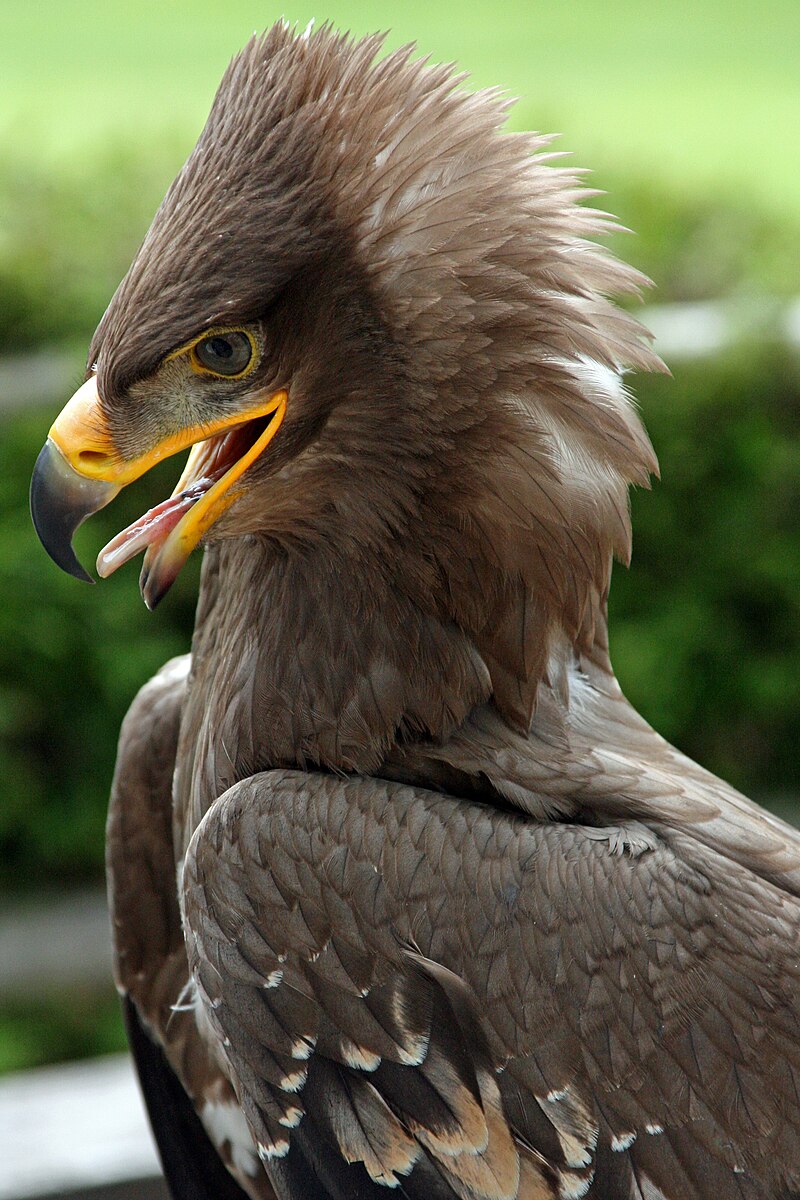Steppe eagles are known to be opportunistic predators, feeding on a variety of small-sized mammals, birds, reptiles, and insects. While they primarily target small mammals like ground squirrels, voles, and hares, they have been observed to occasionally prey on other birds as well.
Steppe Eagles and Their Prey
Steppe eagles are carnivorous birds of prey that primarily feed on:
- Small-sized mammals such as ground squirrels, voles, pikas, zokors, marmots, hares, gerbils, and hedgehogs.
- Birds and reptiles, though this is not a common part of their diet.
- Insects, especially during the winter months.
They are known to be opportunistic feeders, taking advantage of easy prey when available, such as chickens and domestic turkeys.
Do Steppe Eagles Eat Other Birds?
 Image source: Steppe Eagle by Fimb
Image source: Steppe Eagle by Fimb
While steppe eagles do not primarily target other birds as a food source, there have been reports of them occasionally preying on smaller bird species. Some examples include:
- Termite Alates: Steppe eagles have been observed feeding on termite alates, which are the winged reproductive termites that emerge in large numbers during rain fronts and humid conditions.
- Kleptoparasitism: Steppe eagles have been known to steal food from other birds of prey, a behavior known as kleptoparasitism.
- Opportunistic Feeding: Steppe eagles have been observed to take advantage of easy prey, such as chickens and domestic turkeys, when available.
However, it is important to note that the consumption of other birds is not a common or significant part of the steppe eagle’s diet. They are primarily focused on hunting small-sized mammals, with birds and reptiles making up a smaller portion of their food intake.
Factors Influencing Steppe Eagle’s Diet
The diet of steppe eagles can be influenced by several factors, including:
- Breeding Season: During the breeding season, steppe eagles are known to primarily target small-sized mammals, such as ground squirrels, voles, and hares, to provide for their young.
- Non-Breeding Season: During the non-breeding season, steppe eagles may diversify their diet, feeding on a wider range of prey, including insects, semi-altricial young of various animals, and even carrion.
- Availability of Prey: Steppe eagles are opportunistic feeders and will take advantage of easy prey when available, such as chickens and domestic turkeys.
- Habitat and Ecosystem: The specific prey available to steppe eagles can vary depending on the habitat and ecosystem they inhabit, as well as the local wildlife populations.
Steppe Eagles and Conservation
Steppe eagles are classified as “Vulnerable” on the IUCN Red List of Threatened Species. Their populations have declined due to various threats, including:
- Habitat loss and degradation
- Poisoning and persecution
- Collisions with power lines and wind turbines
- Illegal hunting and trapping
Conservation efforts are underway to protect steppe eagle populations and their habitats, ensuring the long-term survival of these impressive birds of prey.
Conclusion
In summary, while steppe eagles primarily feed on small-sized mammals, they are opportunistic predators and have been known to occasionally prey on other birds, such as termite alates and through kleptoparasitism. However, the consumption of other birds is not a significant part of their diet, and they remain focused on hunting small-sized mammals, especially during the breeding season. Understanding the feeding habits and dietary preferences of steppe eagles is crucial for their conservation and the preservation of the ecosystems they inhabit.

